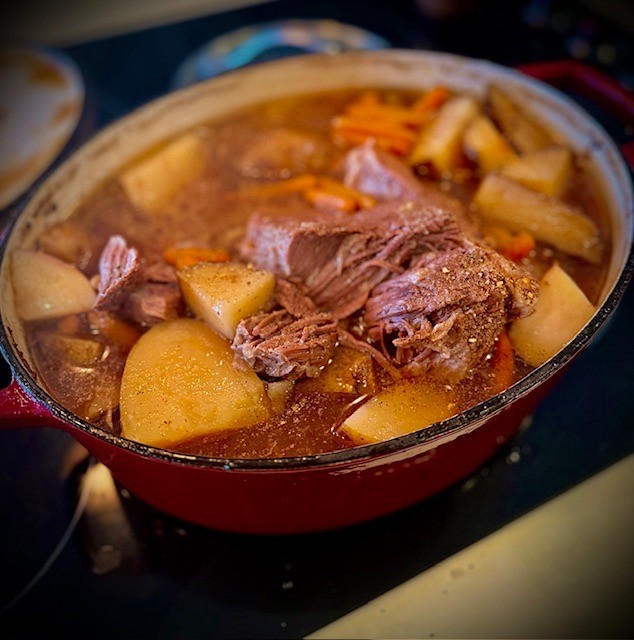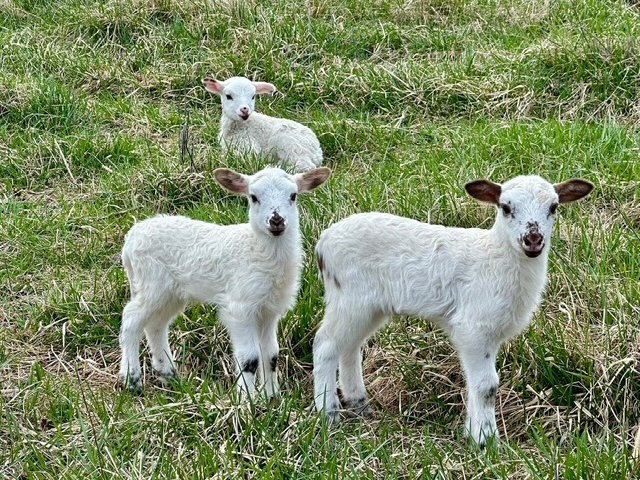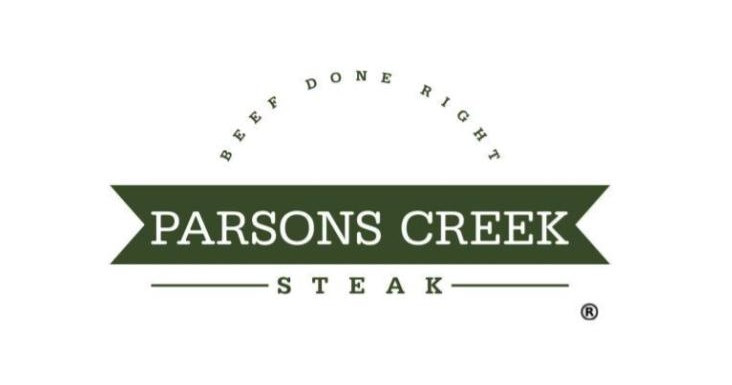Supermarket Beef vs. Local Beef: Know Your Beef
posted on
June 13, 2024
The secret is out, labels are confusing. Even to a cattle farmer. What am I supporting with each sticker; who am I supporting? I feel it's time to give you a glimpse behind our barn doors and demystify the labels behind the grocery store’s doors.
Our process:
- A calf is born on our farm.
- That calf will nurse its mother for up to 8 months.
- After being weaned from its mother, the calf will graze on pasture and snack on grain (the last 4 - 6 months) until they’re sent to be processed at 26 - 28 months.
- Our processor and butcher (also a generational small family business) work to break down each cow.
- Each cow is individually processed and packaged.
- We pick up the cuts and pack each to your specific order.
- We’re USDA-certified and licensed to ship our beef directly to you, no middleman here!

Supermarket process:
- A calf is born on a farm; they graze and nurse until they are about six months or approximately 500 lbs.
- At six months that calf typically receives a Steroidal ear implant.
- Steroidal ear implants are a growth promoting technology administered subcutaneously in the back of the middle one-third of the ear to increase growth, feed efficiency and carcass leanness of beef cattle.
- That calf is then sold to a backgrounding farmer.
- Background farmers let cattle graze their property with the intent of growing each cow to 800-900 lbs.
- That cow is then sold to a feedlot where they may be given antibiotics in their finishing diet.
- Feedlots an “area or building where livestock are fed or fattened up.”
- Data from Oxford Languages
- That cow is then sent to a packing plant, which pays per cow based on hanging weight (carcass).
- The beef is then packaged and transported to cities around the nation.
- Next stop, your supermarket shelves.

Did you know? In large-scale pack house operations, cuts from up to 100 different cows are blended to make a singular ground beef product or package. The Unexpected Number Of Cows A Single Burger's Meat Could Come From (tastingtable.com)
Antibiotic Use
Sounds scary, right? It doesn’t have to be.
Antibiotics are sometimes necessary to keep animals healthy. BUT they can also be used to fatten cows quickly, which is why feedlots love them!
90 - 97% of cattle feedlots use an antibiotic called ionophores in finishing diets. What is an ionophore?
An ionophore is a feed additive that aids in the weight gaining process. One example is called Laidlomycin. Laidlomycin is mixed into cows’ daily feed rations of grain, grass, and other supplements. Laidlomycin’s approved use is to: “Improve feed efficiency and weight gain of cattle being fed in confinement for slaughter.”
It's important to my brother (The Farmer) that we only use antibiotics when deemed medically necessary. If one of our cows has an infection, we won't let them suffer. We’ll intervene. Luckily our Vet is a long time family friend, and always close by if something goes awry. Perks of small town livin’.
Choice
You have tons of beef choices at the grocery store. Labels, cuts, countries of origin, pre-seasoned, plain. But here’s the thing: you didn’t choose any of those choices. It’s a predetermined menu.

We want you to choose the cuts you want. One of the cool things we offer at Parsons Creek is beef sides: whole, half, quarter. This means you get to choose how your beef is broken down. If you love ground beef, we can process a half cow into solely ground beef. Wanna make your own bone broth? We’ll send you bones rich in marrow (which you can also cook with). For our fancy folks, we can include filet mignon, prime rib, and sirloin.
The only label we have on our beef is USDA certified; we really don’t want our labels to be confusing or misleading. Clear, concise communication is key.
You can even have a say in how your beef is raised – if you don’t want a grain-finished cow, we can finish on grass. You’re in direct communication with your farmer.
Relationships
When I was five we moved away from the farm. It was a big deal, my brother and I were excited to experience the big city. As things seem to go, the grass is not always greener. In fact, the grass was yellow. We had not yet learned how to grow a garden at elevation, and we didn't have our family beef stocked in the freezer. Store bought beef was foreign, and so was the taste. I didn’t know where the meat came from and I certainly no longer knew who raised the cow.
Let me introduce you to who's behind your beef at Parsons Creek. My brother Christian, who used to be a diesel mechanic at a big ski resort; can you believe that? My sister in law Maddie, previously a middle school math teacher turned social media guru! My Mother Ticia, a litigation paralegal and farmer extraordinaire! My step-father, Eric, a tax attorney by trade. My Papa, who is also a first responder and volunteer firefighter! My Nanny, who served the local conservation department for 22 years. Me, I am a respiratory therapist by trade and lets not forget Ollie and Austin, they are both only one but are definitely farmers in the making. Meet my family. Your farmers.

Mass production is a wonderful tool and its uses are endless, however it does afford some anonymity. As previously stated this is all in the name of education and transparency. The way our cows are treated is a point of pride for us, where they are raised, how they are raised. All of these things matter to us greatly. Not only for you, the consumer but for us. I eat this beef, I feed my family this beef. Which is why I feel so confident and proud to share our generational family traditions with you.
You know how they say you can taste the difference when it's made with love? I think this most certainly rings true through Parsons Creek Steak beef.




